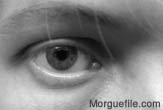Picture Perfect: How to Make Blink-Free Holiday Photos

The group holiday photo shoot is anything but a snap, especially if you want to catch everyone with their eyes open.
To help photographers get the perfect shot, an Australian scientist has calculated the number of photos that need to be taken to ensure at least one blink-free photo.
"At any given moment for a typical person, their eyes are likely to be blinking about 4 to 5 percent of the time," said physicist Piers Barnes of the Commonwealth Scientific and Industrial Research Organization. "This is fine if you only want to take a photo of one person, but once you start adding extra people, then your chances of getting an unspoiled photo start dropping."
To get the right calculation, Barnes's equation takes into account the average number of times a person blinks (10 per minute), how long a blink lasts (250 milliseconds), camera shutter speed (8 milliseconds in a typical setting), and the number of people in the group.
"For groups of less than 20 people, divide the number of people in the group by 3 if the light is good or by 2 if the light is bad," Barnes told LiveScience. "Take that number of shots and you will have a better than 95 percent chance of getting at least one good one."
Barnes offered a few other tips:
Pose in the light. In poor lighting, the camera's shutter speed stays open longer, giving more time for someone blink.
Get the world’s most fascinating discoveries delivered straight to your inbox.
Keep it small. Getting a flawless photo of groups of 100 or more people is nearly impossible, according to Barnes's calculations.
Ask your models not to blink and accept the bug-eyed consequences. After giving the command, you've got about 12 seconds during which the odds are better you'll get an untainted shot.


